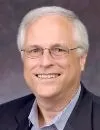John Lewis, Andrew Young, Julian Bond Reflect on King’s I Have a Dream Speech
Gathered at the National Press Club Aug. 27 with host Marvin Kalb to mark the 50th anniversary of the 1963 March on Washington and to talk about the impact of Martin Luther King’s “I Have a Dream” speech were three of the leaders of the 1960s civil rights movement—John Lewis, Andrew Young and Julian Bond.Joining them were John Wilson, the president of Martin Luther King’s alma mater, Morehouse College; PBS News anchor Gwen Ifill; and Dorothy Gilliam, the first African American woman hired as a reporter by the Washington Post.
Rep. Lewis, who as a 23-year-old leader of the Student Non Violent Coordinating Committee (SNCC), is the last surviving speaker of that momentous day. Former Ambassador Young was a top King aide during the March, and Julian Bond, who became chairman of the NAACP, was SNCC’s communications director that day.
Kalb himself reported for CBS News, standing within 20 feet of King when he spoke.
In a wide-ranging discussion, they explored the impact of what happened that day, the role of the news media in shaping the national debate on the civil rights movement, and the value of education in producing both the leaders of the movement and the new generation of black leaders.
Young and Bond said that many in the civil rights movement thought the March on Washington was a distraction from the real work happening in the cities and the sharecropper shacks in the South. The movement had just brought Birmingham’s economy to its knees through an economic boycott, they said. There was “a kind of militant arrogance,” Young said.
“But when the buses started coming in, singing freedom songs from all directions, you couldn’t hold back the tears,” Young said. He called it “a global phenomena.”
The fear before the march was that it would turn violent, the panelists said. President Kennedy warned that violence would destroy any chance of passage of the civil rights legislation he had just proposed.
Gilliam said all of the preparations at the Washington Post before the speech anticipated violence—how reporters could identify the bad people and how the Post could rescue injured reporters. Instead, she said, “It was a quiet, focused crowd.” Lewis said he toned down his remarks at the behest of King so as not to sound too radical.
It was the first time, Bond said, that many whites saw a black man give a coherent speech on what the civil rights movement was all about.
In a city where legislation moves slowly, so much happened after the March on Washington—passage of the Civil Rights Act in 1964 and the Voting Rights Act in 1965 —that it must have been a pivotal moment, Gilliam said.
Before King could transform the world, he had to be transformed himself, Wilson said. When King entered Morehouse, he could read only on an eighth-grade level. When he left, he was ready to enter a PhD program.
Ifill said the genius of the civil rights movement was learning how to stage events that illustrated the suppression of blacks in the South so that the national media would pick them up and broadcast them to the entire nation—and the world.
Young said the organizers learned that they had to stage their events early so that the national network reporters could get their tape on planes to New York by 1:00 p.m. to make the evening news.
The black press covered civil rights issues but did not have the resources, Gilliam said. The white press didn’t discover black people until the Supreme Court’s 1954 Brown v. Board of Education decision, she said. But with three black reporters—and no black editors—on the Post in 1963, it did not have the diversity to really understand the story, she said.
Despite having 65 reporters covering the march, the Post hardly mentioned King’s “I Have a Dream” speech.
“There’s not much more diversity now,” Ifill said. “As the general population gets browner, the news media is getting whiter.”
This program also launched the 20th season of “The Kalb Report,” which now is produced by UMUC and the National Press Club and is broadcast nationwide on public television stations and by Sirius-XM Satellite Radio. This edition also aired live on C-SPAN and was broadcast by the CBS Radio Network.
A packed audience filled the Club’s ballroom for the program, which was presented as a UMUC diversity evening attended by faculty, students and staff who were joined by President Javier Miyares and Provost Marie Cini.
The executive producer of the series is UMUC Senior Vice President Michael Freedman. The senior producer is UMUC Associate Vice President Heather Date.
The Kalb Report is a joint project of the Club, the University of Maryland University College, the George Washington University and Harvard University’s Joan Shorenstein Center for the Press, Politics and Public Policy. It is underwritten by a grant from the Ethics and Excellence in Journalism Foundation.

Share This